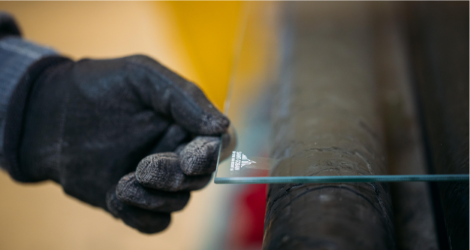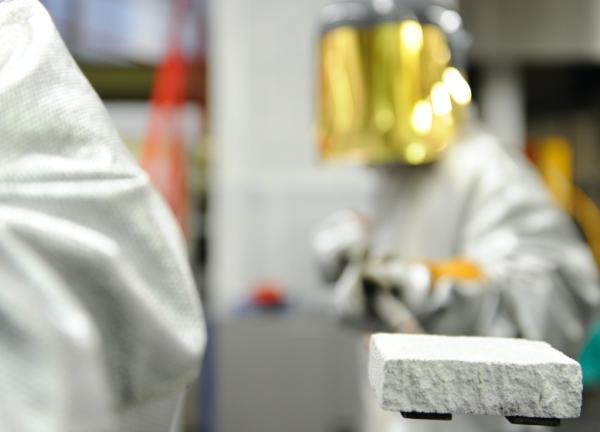Why is 2022 the International Year of Glass?
The UN has decided to make 2022 the International Year of Glass, dedicated to exploring the ways glass is helping us achieve a more equitable and sustainable world.
From glazing to vaccine vials, glass impacts in our lives in myriad ways – some more obvious than others. To celebrate this, and to promote the innovations taking us to the next chapter, the UN has declared 2022 to be the International Year of Glass.

Normally we are looking through glass, but we don’t see glass. The UN year invites us to really look at glass.
Alicia Durán is on a mission to get the world talking about glass. “Normally we are looking through glass, but we don’t see glass,” she says. Durán is the Chair of the Steering Committee for the UN International Year of Glass 2022, which aims to celebrate the utility of glass, drive interest in the glass industry and promote innovation in the sector.
“The UN year invites us to really look at glass. When you ask a normal citizen about glass, they talk about windows and glass bottles,” says Durán. “But they don’t fully appreciate how important it is, and how it is helping us hit our sustainability goals.”
Participants in the initiative come from 90 countries, across five continents. Through events, activities and exhibitions, the Year will not only celebrate the importance of glass in shaping our society, but its pivotal role in moving us to a more sustainable future.

What makes glass special
Glass is special as this amorphous solid is both part of our lives for centuries and yet still pushing away the limits of innovation and scientific discovery, through fiber optics, customized and connected windshields for the car industry but also for its medical potential as Alicia Duran highlights: “This has been very important in the delivery of COVID-19 vaccinations, as the vaccines need to be stored in extremely low temperatures. Glass is vital in making sure we can preserve and use these vaccines”.
However, it is in construction where glass and its inherent qualities could well have the most significant impact, helping us build a more sustainable world and fulfil the UN’s sustainability goals.
Glass is lightweight and easily cleaned and maintained. Its chemical resistance means it holds up well against the elements. Glass is the essential component of Building that gives access to natural light and outside view while protecting against heat in summer, cold in winter or noise near road. A key enabler of indoor comfort that can be raised by the use of interior glass walls.
Perhaps most importantly: it is, theoretically, infinitely recyclable. Unlike materials like plastic, it does not become degraded over time. You heat up broken glass (cullet) until it melts, and then reconstitute the melt into new glass. The melting of cullet as raw material produces no direct CO2, and furnaces burn less intensely to melt cullet glass.
TO READ: “ARE THERE ANY MATERIALS THAT CAN BE INFINITELY RECYCLED?”
And unlike other materials which are difficult to effectively reuse, glass constitutes an abundant and renewable resource for building. The journal Nature even called it “the hidden gem in a carbon neutral future”.
Despite its larger carbon footprint, one advantage concrete has had over glass is that it is a more effective insulator of heat. But new developments are helping address this imbalance. For instance, Saint-Gobain’s thermally insulating glass (also known as low-emissivity, or low-E glass) has a transparent, reflective metallic coating that helps reduce heat losses and helps make buildings more energy efficient: for Europe for instance, 37% of the total buildings’ energy consumption can be saved in 2050 thanks to high-performance glazing products.
New innovations in greener glass
There are other ways we can make glass a more sustainable material, whether it’s used for construction or elsewhere. For example, the role of glass in creating a more circular economy is reliant on the effectiveness of recycling processes.
In 2019, 78% of all glass products were recycled across the EU28 countries. This is significant but it must be possible to do even better, especially in the building sector. One of the goals of the UN International Year of Glass is to get average recycling rates over 90% by 2030. It aims to achieve this through a combination of better collection, sorting and treatment processes.
But getting more people to recycle isn’t the end of the story. In particular, more effective channels need to be found for the recycling of flat glass. Flat glass (the material used in window glazings) needs to be highly pure, so can only be made from other recycled flat glass – not from, for example, discarded bottles. Therefore, separate recycling channels are needed to make sure this purity is retained. For Saint-Gobain Glass, this means to increase the current ratio of cullet from 34% in 2022 to 40% in 2030.
Beyond recycling, we can also continue to improve the sustainability of the glass by bettering the way it is produced. Significant amounts of energy are still needed to produce glass but work is being done to increase the efficiency of these processes.
And Saint-Gobain is at work driving forward these evolutions in glassmaking technology, in order to show that 2022, year of glass, could be a year of sustainable innovation for the flat glass industry.
Throughout 2022, with the UN’s help, issues like these will be pushed to the forefront of conversations about glass, how it is made, how it is recycled and how it can be used to build a more sustainable world.
“We need to show people where glass works, and what the role of glass is, and how it supports the evolution of a more sustainable, and a fairer society” says Durán. “That’s what we hope to achieve across 2022. Welcome to the glass age.”
Photos credit : Fahroni/Shutterstock et Medialibrairy Saint-Gobain


